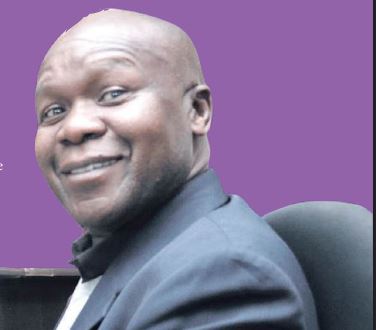
 The Star Newspaper Associate Editor Joseph Olweny
The Star Newspaper Associate Editor Joseph Olweny
In November 2006 word started filtering out that Patrick Quarcoo (founding CEO of Radio Africa Group), a highly regarded and gifted media entrepreneur, and his austere business partner William Pike, who at the time had spent 26 years as managing director of Uganda’s number one daily, The New Vision, were to launch a newspaper early the following year.
My friend and former Nation Media Group editor Charles Onyango-Oboo would tell me the Editorial Director of the new paper was likely an irascible Englishman from Manchester, Frank Whalley, who was the training editor at the Nation and doubled as a capable and reliable production man in shaping the Daily Nation’s front page, had been identified as the founding editor.
It was to be, after many short-lived experiments, a strong number three newspaper in the market with ambitions of giving the number two (The Standard) a run for its money.
Then in early February 2007, what had been kept as closely held secret, hit the airwaves.
The adverts were strident and full or vim and vigour.
Kiss and Classic FM ran ads every hour. The Nairobi Star was primed as a great new youthful product for the upwardly mobile that was to hit the market in a matter of weeks.
Every matatu you entered was tuned to Kiss and Classic, and the adverts were enticing.
First I wanted to apply for the role of Sports Editor, but at the time, Whalley had initiated talks with and had high hopes of hiring the Nation’s Elias Makori.
Whalley was under pressure to wrap the hiring process by end of February and I met him over coffee at the New Stanley to not only talk about my joining his team but also help in identifying journalists who we could head hunt.
When Makori decided not to leave the Nation, we zeroed in on a veteran journalist and sports writer, Sulubu Tuva, as his replacement.
But even as I was closely working with Whalley I had not been hired.
I submitted my application letter to Whalley, and in due course, I was called and told to appear for an interview.
I had applied for the role of production editor, after all I had worked as a subeditor for about nine years at the Nation and knew my way around a newspaper production process.
During the interview, which took place in mid-February 2007 on the second floor of Lion Place, Quarcoo, debonair and all, sized me up and hardly asked any question save for reassuring me his project was built on a solid financial ground and that all the paper needed at the time was a one page advert daily for a year to keep afloat.
For his part, Pike was more interested on my views about the killing, by police in Athi River, of Simon Matheri Ikere, a notorious gangster who had evaded arrest for years and whose death had been widely covered in print media.
In those early days the HR department did not exist and you were either interviewed by Whalley or Pike or Quarcoo.
By May a team had been assembled, including founding editor Catherine Gicheru, poached from the Nation, Mwangi Githahu (news editor), Dick Aguda (sport subeditor), Mbogo Murage (chief sub) plus a large number of young reporters and correspondents.
For two months we came to the office to do dry runs, which would culminate with a 32-page newspaper on A3 paper.
The idea was to get used to a very tight deadline for a morning paper because the Nation were contracted to print and they had set 5pm as the deadline and the caveat was that if the paper got late, the Nation would prioritise their own products — the Nation, Taifa Leo and Business Daily — and print the Nairobi Star, as the paper was then called, last. This meant late arrivals in the morning market and would be a great setback for a new product. That meant 5pm was hallowed.
The anxiety and pressure was palpable. Whalley was ruthlessly aggressive and uncompromising and would, loudly, make anyone whose work ethic threatened to breach the 5pm deadline know in no uncertain terms that he was in charge.
The launch on July 1, 2007 was a day of attention-grabbing audacity.
Beautiful young women covered their barely-there swimsuits, leaving little to the imagination, with large brown raincoats at key roundabouts in the city.
And with motorists in the rush hour traffic, they would at select intervals, fling open and reveal their gorgeous full figures to passing motorists.
They were done by midday by which time we had reports of the snarl-ups they had caused and the huge attention the drama had given the new paper.

![[PHOTOS] The Star celebrates 18-year anniversary](/_next/image?url=https%3A%2F%2Fcdn.radioafrica.digital%2Fimage%2F2025%2F07%2F182ba213-2966-4935-83f2-db2115eec536.jpg&w=3840&q=100)











